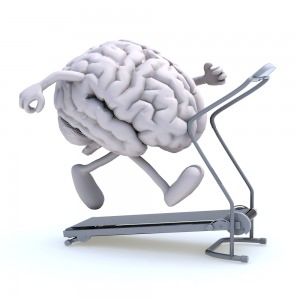What Is Brain Plasticity?
Brain plasticity, also known as neuroplasticity, is the ability for the brain to change itself physically, functionally, and chemically throughout life. It is related to changes in neural pathways and synapses due to changes in behavior, environment, neural processes, thinking, and emotions. The capacity of organisms to change is a fundamental characteristic in most nervous systems and can be seen in even the simplest of organisms, such as the tiny worm C. elegans, whose nervous system has only 302 cells, while the human brain has about 100 billion nerve cells (neurons). Cognitive scientists have always assumed the nervous system is especially sensitive during childhood and early brain development, but in recent years this assumption has been challenged by new findings revealing that many aspects of the brain remain plastic throughout an individual´s lifetime. When there are changes in the nervous system, there is often subsequently a correlated change in behavioral or psychological function.
Neural networks are composed of individual neurons, each of which connects with a subset of other neurons to form interconnected networks. Plasticity occurs at the junctions between neurons through a process called synapses (a synapse is a structure that permits a neuron to pass an electrical or chemical signal to another nerve cell).
Factors that are now known to affect neuronal structure and behavior include the following:
- experience (both pre- and postnatal)
- psychoactive drugs (e.g., amphetamine, morphine)
- gonadal hormones (e.g., estrogen, testosterone)
- anti-inflammatory agents (e.g., COX-2 inhibitors)
- growth factors (e.g., nerve growth factor)
- dietary factors and nootropics (e.g., vitamin and mineral supplements, piracetam)
- genetic factors (e.g., strain differences, genetically modified mice)
- disease (e.g., Parkinson’s disease, schizophrenia, epilepsy, stroke)
- stress
- brain injury and disease
Why Brain Plasticity in Trading?
The brain needs to be conditioned in the same manner the heart is conditioned to stay healthy – each day through aerobic exercise. This is why brain-training exercises are sometimes referred to as "neurobics." Traders can improve the neuroplasticity of the brain by doing neurobic exercises in the same way they exercise their physical body. The need for a trader´s brain to be mentally fit is more relevant now than ever. The dynamics of the financial markets are constantly changing due to globalization and technology. With the influx of automated trading, some of the old axioms and knowledge that was needed to trade are almost obsolete in the current trading landscape. Traders have to constantly adapt and rearrange their trading methods. So, having a fit brain that can rewire itself to adapt to the market changes can ultimately be beneficial. Moreover, it is well documented and well researched that trading causes a lot of stress. According to research by Fuchs, Eberhart and colleagues in "Adult Neuroplasticity: More Than 40 Years of Research," under stress, the geometric length of the apical dendrites of pyramidal neurons in the hippocampus shorten. (Dendrites are the branched projections of a neuron that act to propagate the electrochemical stimulation received from other neural cells to the cell body, or soma.) Daily brain exercises can protect against the ravages of stress. Stress has been shown to reduce the neuroplasticity of the brain. When dendrites retract, the surface of the neurons shrink, then the number of synapses and neural connections are reduced. This dendrite retraction has been also observed in other areas of the brain under stress. However, once the stress is reduced, the synapses are replaced.
Neurobic Exercises for Traders
Switch Your Market View
The best and easiest way for traders to work on their brain plasticity is by strengthening their neural pathways and changing the patterns of everyday activities. Switching the market's perspective forces traders' brains to adapt by expanding new neural connections. For example, if a trader has a habit of trading the market on the buy side (bull), he/she should take a minute to print the buying chart strategy and flip it upside down and try to analyze this strategy from a seller's (bear) perspective. This technique will not only strengthen traders' brains over time, because thinking and analyzing help grow dendrites, but it will help them see what the other traders are thinking and open the door for new trading opportunities.
Neuroplasticity Training Programs
With the advancements of the cognitive and behavioral science fields, more attention is being paid to the many biases that often lead to irrational thinking and decision-making. The ability to train the brain to operate outside biases, presumptions, and perception is a powerful tool in trading. Some of these training programs also come with games that address problem-solving, mental speed, flexibility, memory and attention, which are important factors that can help some traders with anxiety and impulse trading.
Physical Activities
A recent study conducted at the University of Adelaide in Australia suggests that one 30-minute session of vigorous exercise can lead to changes in the brain that make it more “plastic,” including improvements in memory and motor skill coordination. A similar study conducted at the University of Illinois at Urbana-Champaign found that regular exercise can benefit the brain’s supply of white matter, also known as “the subway of the brain” due to its ability to connect different regions of grey matter in the cerebrum to each other.
Brainwave Entertainment
Brainwave entertainment is probably the most convenient technique for traders while trading. It is a well-known fact that music and sounds affect emotions while stimulating both the right/left brain hemispheres. In the financial markets, however, many fail to fully develop their right brain when trading, but specific sounds like binaural beats, which have been proven to promote left- and right-brain hemispheric convergence, can help traders to have more access to their whole brain. Meditation music and binaural beats can also stimulate select brain waves. In a recent article, “A Closer Look at Neurofinance in Trading,” we discussed the effects of trading on brain waves and how traders tend to have higher beta frequencies than the normal population. The problem with functioning on high beta frequencies is that delta/beta cycles cause an elevation in blood sugar levels and blood pressure throughout the day. Without a retreat to the alpha and theta waves, concentration, relaxation and overall health are compromised. To solve this issue, there are many things traders can do to increase alpha waves and replace stress and anxiety while enhancing mental performance. One is intake of the amino acid theanine found in green tea leaves and in the truBrain nootropics supplement. But meditation music and binaural beats are instant "engineered frequencies" designed to massage the brain and stimulate the production of alpha and theta waves.
Brain Training Rules
- Brain-training exercises should be approached with caution. Like physical exercise, not every exercise is good for the individual, and should done with moderation.
- Try to avoid scientifically unproven mental training exercises. There are many brain games on the Internet that are labeled "neuroplasticity exercises" that do not have scientific validation.
- Make sure the training and exercises are balanced, because too much can cause overstimulation of the brain.
- Look for improvements in your daily life functioning. Test scores can improve in exercises, but these improvements should also be reflected in your daily functioning.
- Stay away from exercises that claim they can increase your brain potential from 10 to 50 percent.
POLL: Can Traders trade better with a sharper/fit brain?
Editors’ Picks
EUR/USD regains traction, recovers above 1.0700

EUR/USD regained its traction and turned positive on the day above 1.0700 in the American session. The US Dollar struggles to preserve its strength after the data from the US showed that the economy grew at a softer pace than expected in Q1.
GBP/USD returns to 1.2500 area in volatile session

GBP/USD reversed its direction and recovered to 1.2500 after falling to the 1.2450 area earlier in the day. Although markets remain risk-averse, the US Dollar struggles to find demand following the disappointing GDP data.
Gold climbs above $2,340 following earlier drop

Gold fell below $2,320 in the early American session as US yields shot higher after the data showed a significant increase in the US GDP price deflator in Q1. With safe-haven flows dominating the markets, however, XAU/USD reversed its direction and rose above $2,340.
XRP extends its decline, crypto experts comment on Ripple stablecoin and benefits for XRP Ledger

Ripple extends decline to $0.52 on Thursday, wipes out weekly gains. Crypto expert asks Ripple CTO how the stablecoin will benefit the XRP Ledger and native token XRP.
After the US close, it’s the Tokyo CPI

After the US close, it’s the Tokyo CPI, a reliable indicator of the national number and then the BoJ policy announcement. Tokyo CPI ex food and energy in Japan was a rise to 2.90% in March from 2.50%.
RECOMMENDED LESSONS
Making money in forex is easy if you know how the bankers trade!
Discover how to make money in forex is easy if you know how the bankers trade!
5 Forex News Events You Need To Know
In the fast moving world of currency markets, it is extremely important for new traders to know the list of important forex news...
Top 10 Chart Patterns Every Trader Should Know
Chart patterns are one of the most effective trading tools for a trader. They are pure price-action, and form on the basis of underlying buying and...
7 Ways to Avoid Forex Scams
The forex industry is recently seeing more and more scams. Here are 7 ways to avoid losing your money in such scams: Forex scams are becoming frequent. Michael Greenberg reports on luxurious expenses, including a submarine bought from the money taken from forex traders. Here’s another report of a forex fraud. So, how can we avoid falling in such forex scams?
What Are the 10 Fatal Mistakes Traders Make
Trading is exciting. Trading is hard. Trading is extremely hard. Some say that it takes more than 10,000 hours to master. Others believe that trading is the way to quick riches. They might be both wrong. What is important to know that no matter how experienced you are, mistakes will be part of the trading process.
